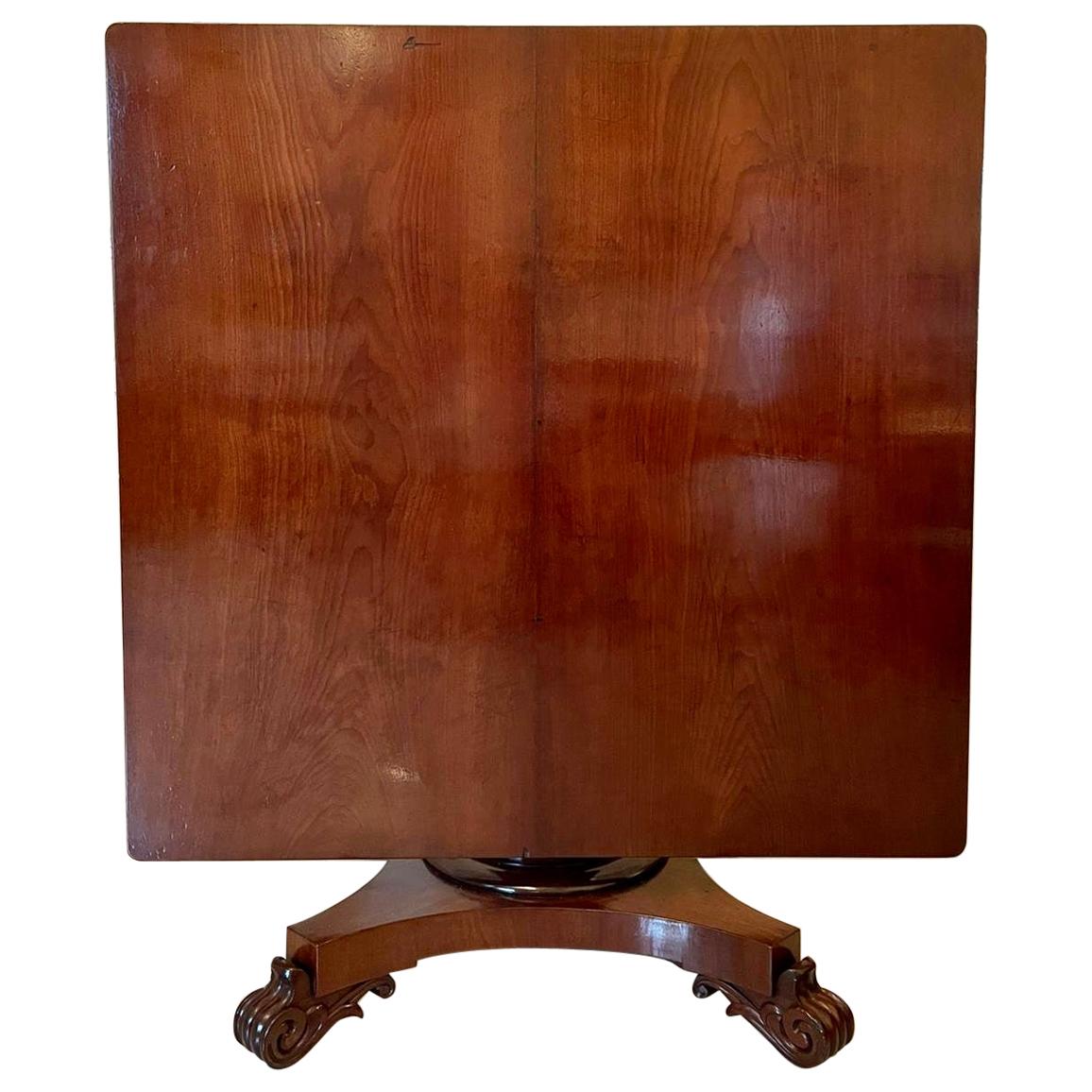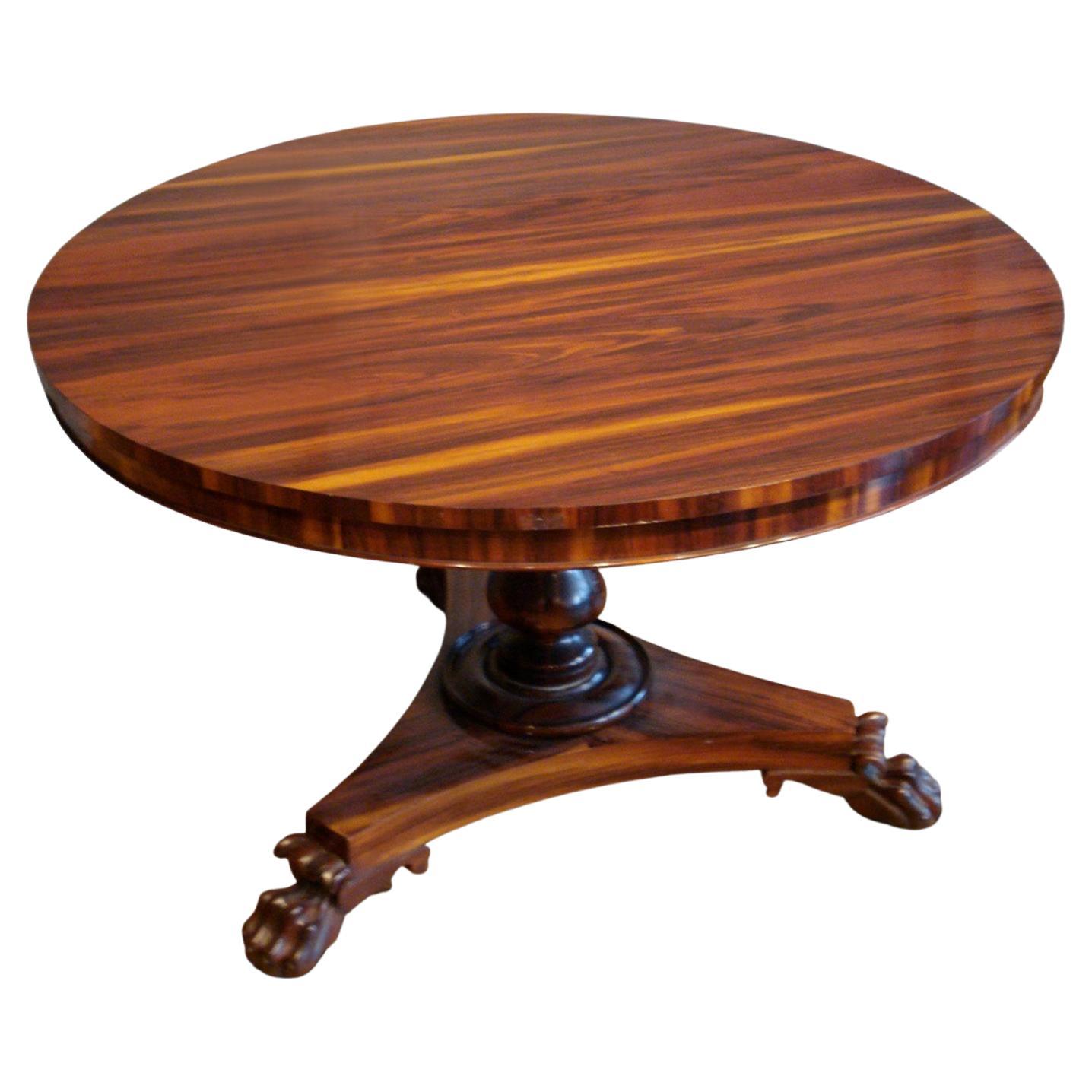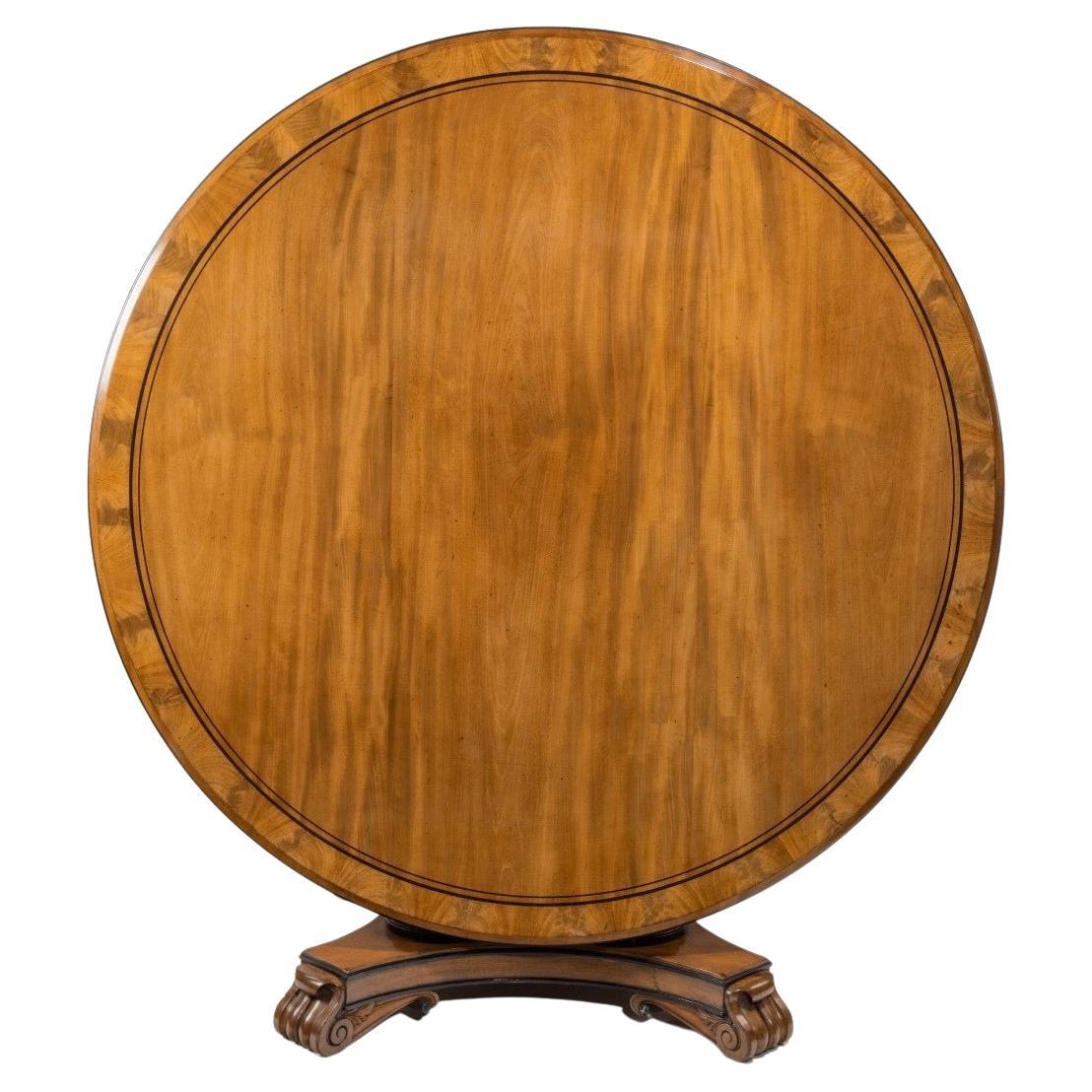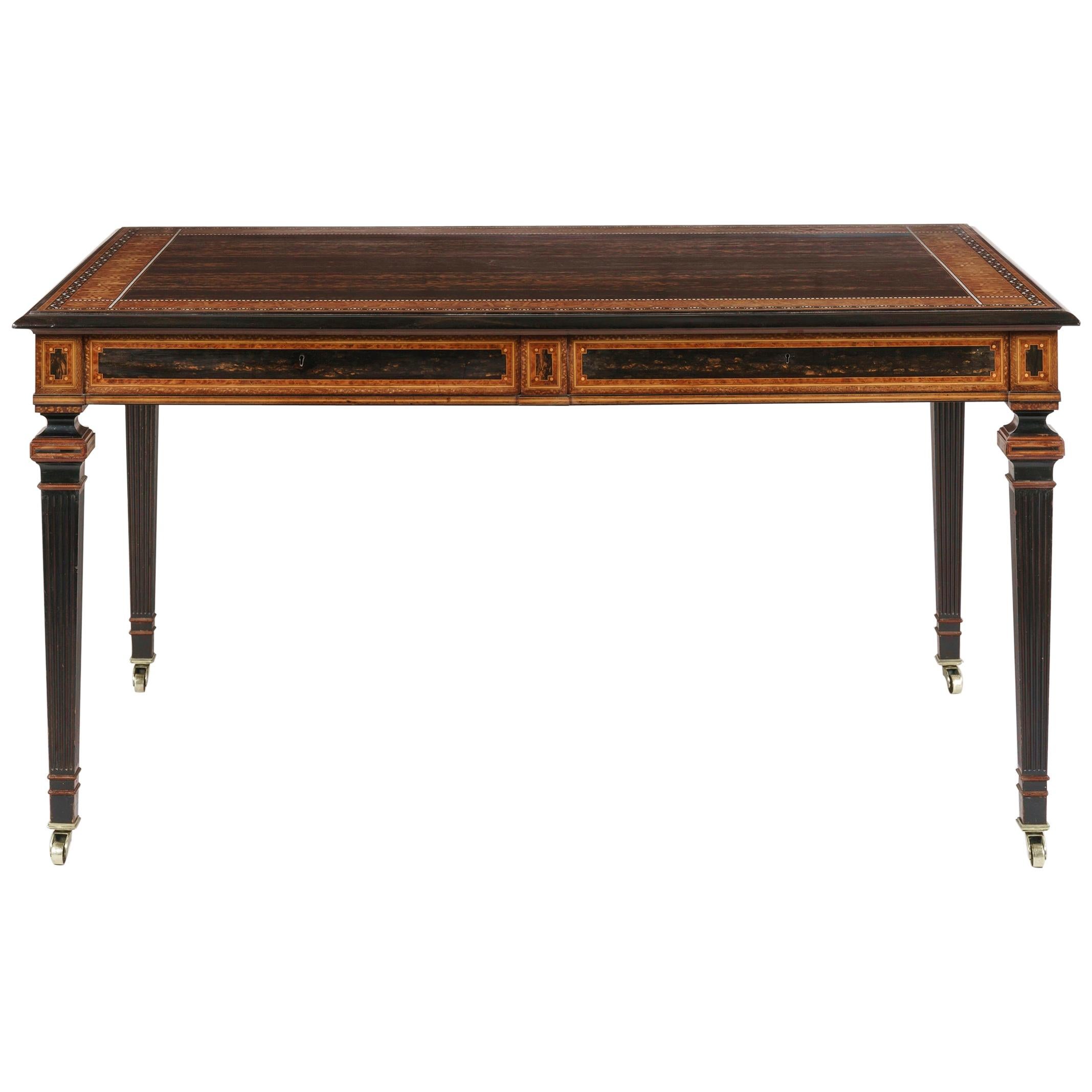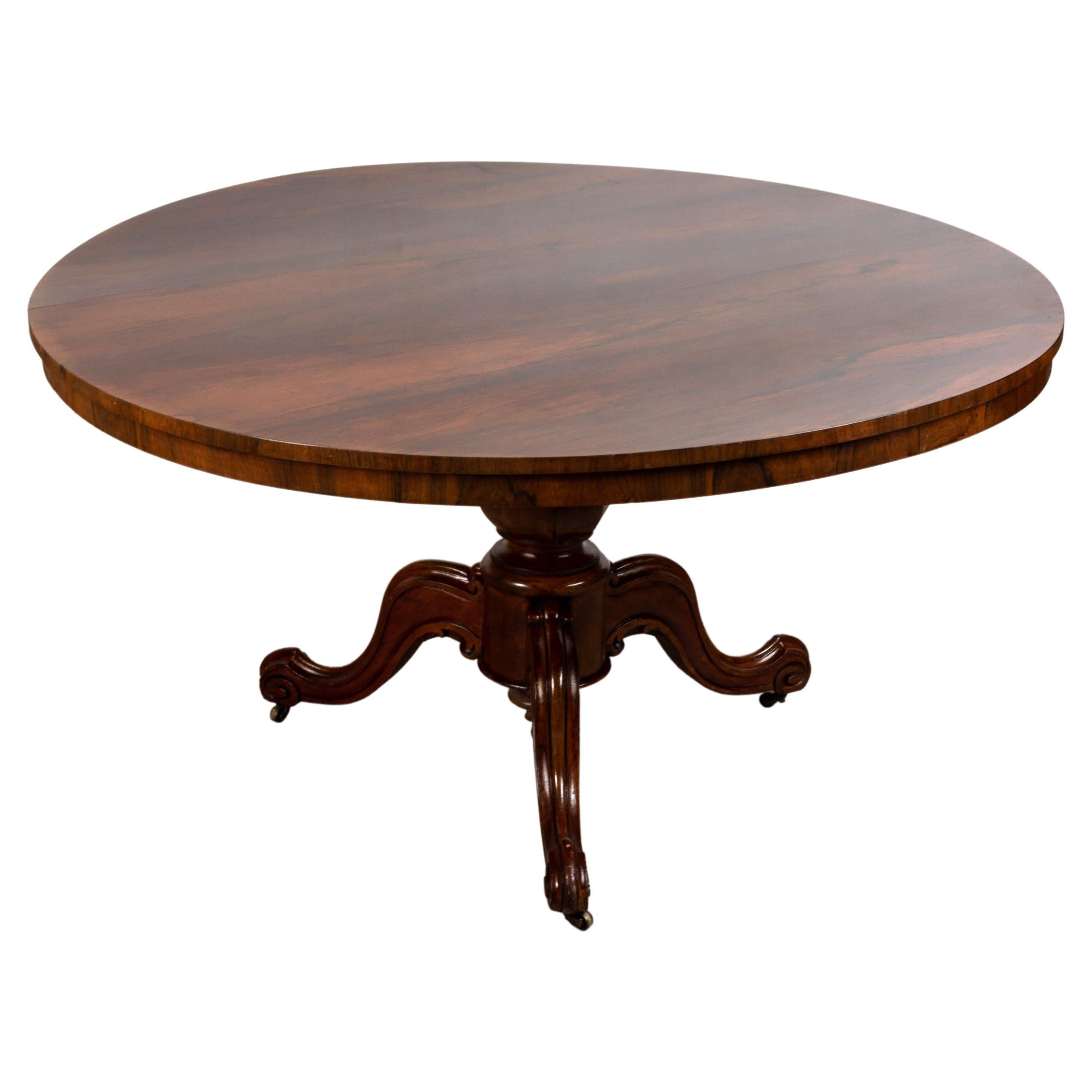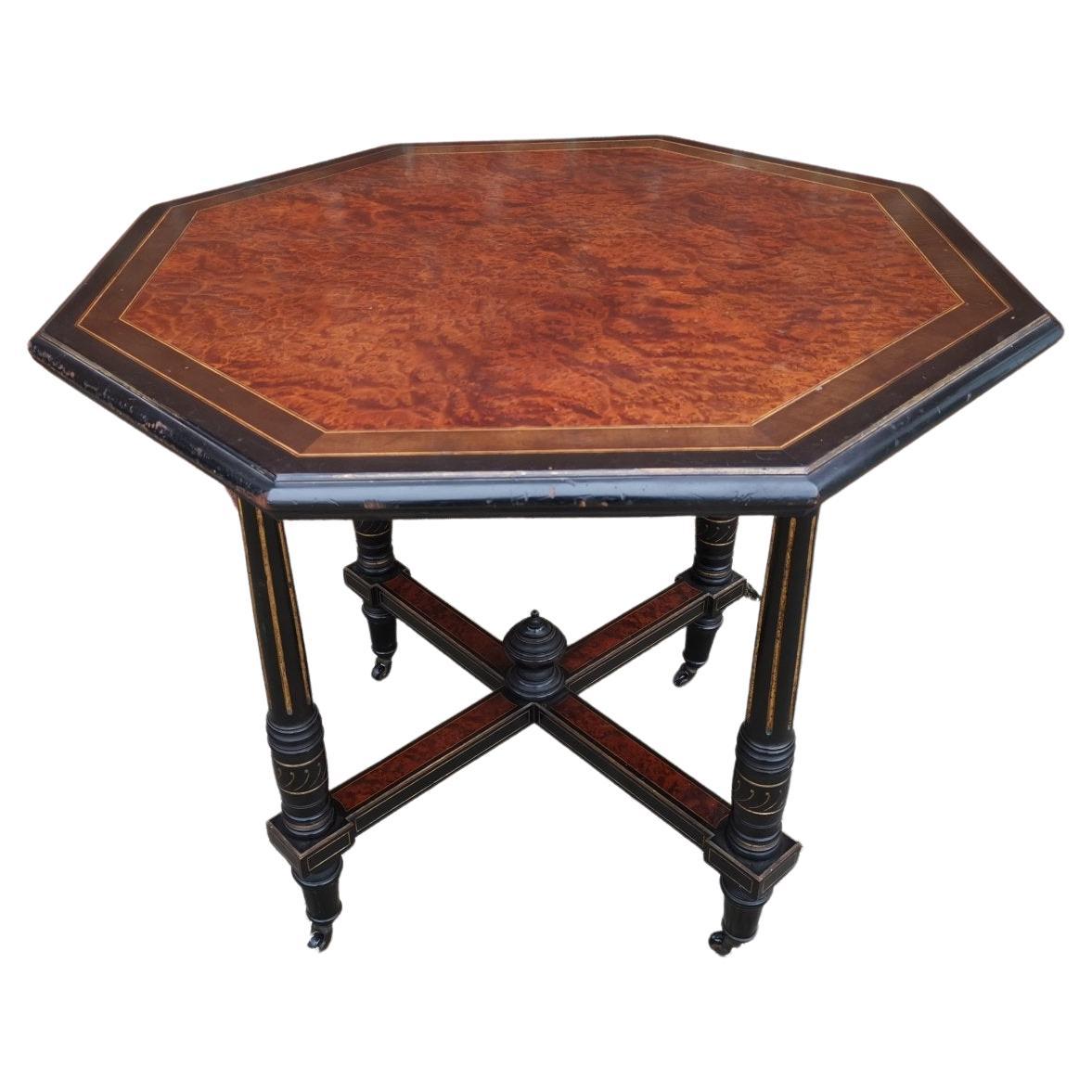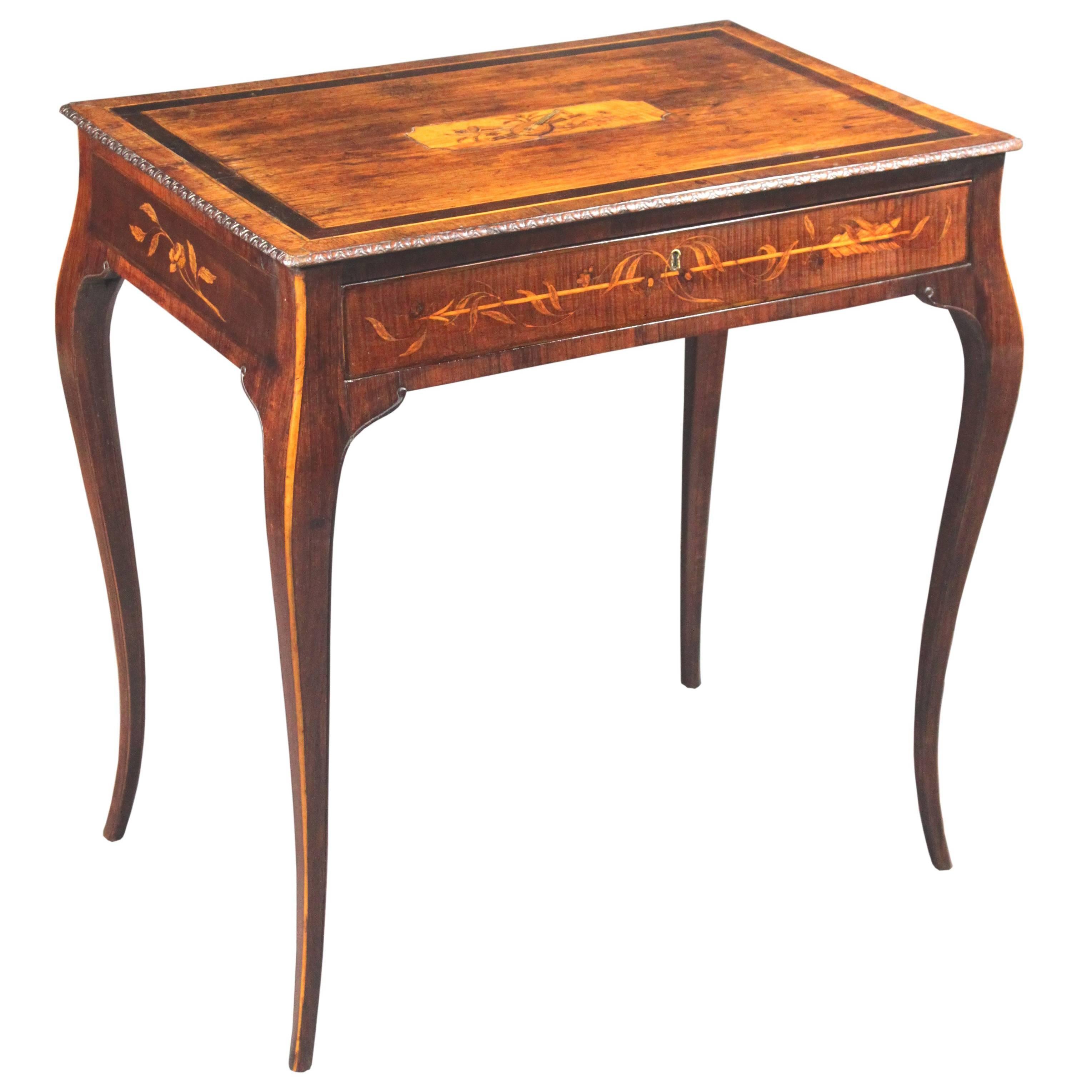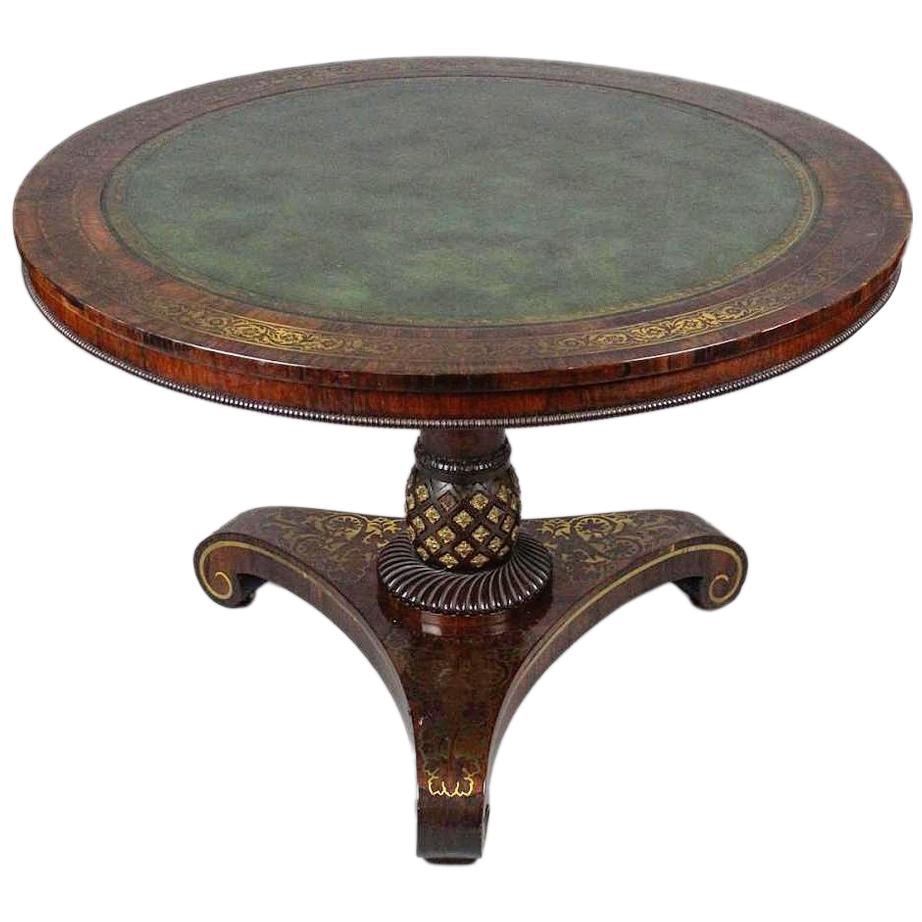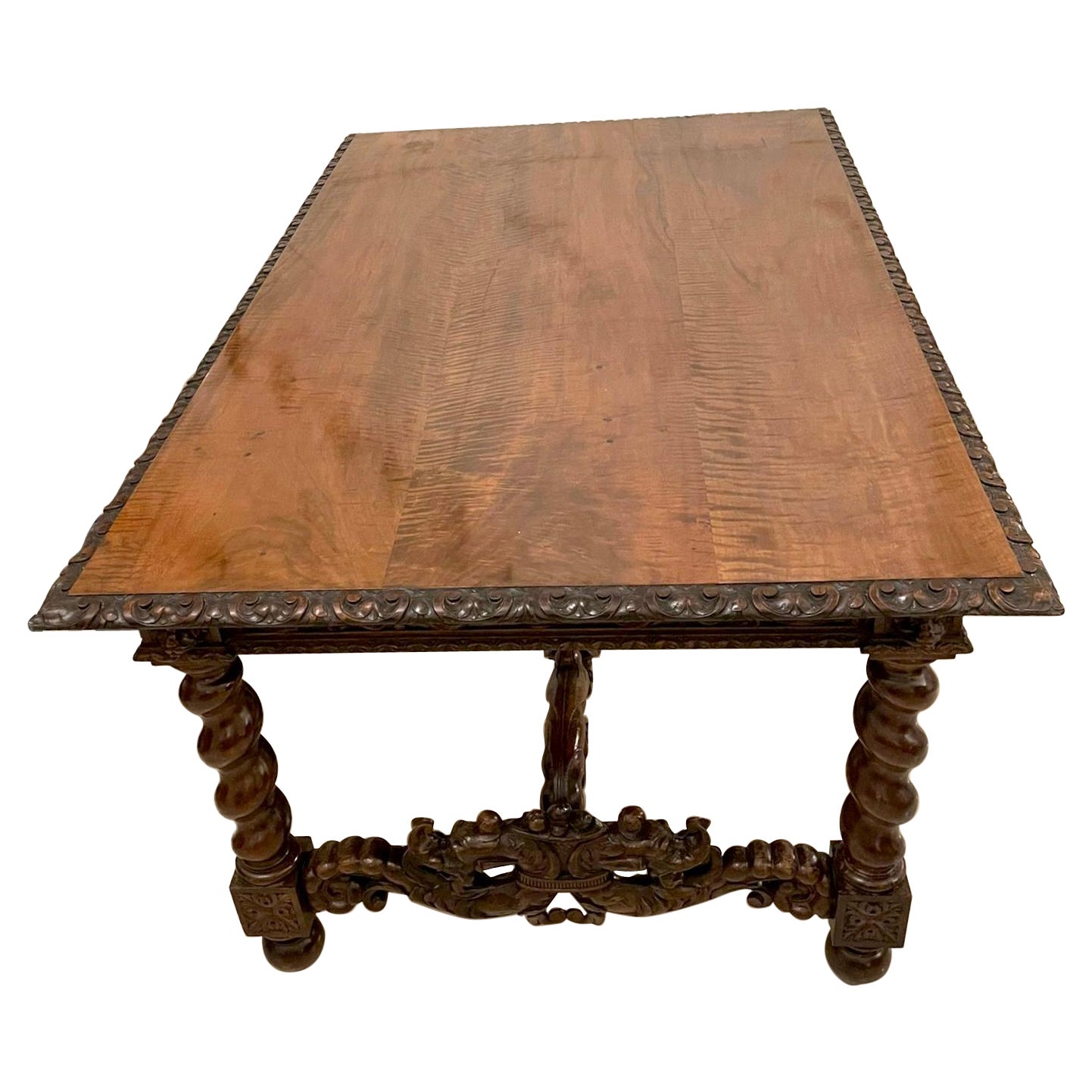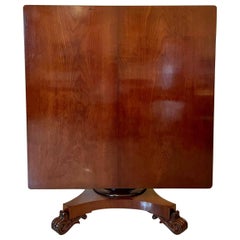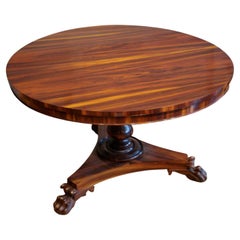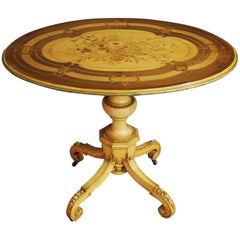
Exhibition Quality Sycamore Centre Table in the Manner of Jackson & Graham
View Similar Items
1 of 10
Exhibition Quality Sycamore Centre Table in the Manner of Jackson & Graham
About the Item
- Similar to:Jackson & Graham (Cabinetmaker)
- Dimensions:Height: 30.25 in (76.84 cm)Width: 36.75 in (93.35 cm)Depth: 28.5 in (72.39 cm)
- Materials and Techniques:
- Period:
- Date of Manufacture:1860
- Condition:Wear consistent with age and use.
- Seller Location:Suffolk, GB
- Reference Number:Seller: LVS6421stDibs: LU104903084682
You May Also Like
- 19th Century Large Quality Antique William IV Centre/Tilt Top TableLocated in Suffolk, GB19th century large quality antique William IV centre/tilt top table having an impressive quality mahogany top supported by a glorious hexagonal column and standing on a platform base...Category
Antique Early 19th Century English William IV Center Tables
MaterialsOther
- Very Rare 19th Century William IV Period Centre Table in Goncalo AlvesLocated in Petworth,West Sussex, GBAn unusual 19th century centre table in Goncalo Alves, sort of rosewood with a circular tilt-top, turned baluster stem and a concave sided trefoil platform raised on scroll carved claw feet with concealed castors. England circa 1830. Superb quality. Gorgeous table with a lot of character, with good proportions, good height, exceptional width, good knee room and easy space to seat. Great colour and patina throughout. The dimensions are: Height: 72cm (28.3in) Diameter: 115cm (45.3in) This exceptional rosewood centre table is in good antique condition throughout. The antique centre...Category
Antique 19th Century British William IV Center Tables
MaterialsRosewood
- George IV Ebony-Inlaid Mahogany Tilt-Top Centre TableLocated in Lymington, HampshireA George IV ebony-inlaid mahogany tilt-top centre table, the circular top with a flame-veneered cross-banded border above a moulded frieze with ebony stringing and four small rectang...Category
Antique 1820s English George IV Center Tables
MaterialsEbony, Mahogany
- 19th Century Coromandel and Inlaid Table Attributed to Jackson & GrahamBy Jackson & GrahamLocated in London, GBA magnificent library table Attributed to Jackson & Graham Of free standing rectangular form, constructed in coromandel, with inlays in thuya, ebony, boxwood, and honeysuckle; the fluted legs rising from square brass castor-shod feet; the frieze housing two lockable drawers fitted with rare ‘tamper proof’ Chubb locks and having quadrant moulded cedar lined interiors; the platform having a central panel of beautifully chosen matched coromandel veneers, with an outer guard border of a running pattern of stylised anthemions; the ebony edges having a thumb nail moulding, circa 1865 The firm of Jackson & Graham established in 1836 by Thomas Jackson and Peter Graham at 37 Oxford Street London, and for the next fifty years produced predominately high quality furniture and represented Britain at many of the international exhibitions. Their clients included Queen Victoria, Napoleon III, the Grand Khedive of Cairo and the royal palace in Siam. They were particularly noted for their fine marquetry work, the use of Wedgwood plaques, rare woods, and fine casting of bronze mounts. They engaged the leading designers of the period, inter alia, Owen Jones, Bruce Talbert, Alfred Lorimer and Eugene Prignot. In the mid-1850s the workforce was recorded as 250, and by 1875, the company was employing 600 workers. They were feted exhibitors at many of the Great Exhibitions of the 19th century, and frequent prize winners. At the Paris International Exhibition of 1878, the furniture jury noted of them ‘ the workmanship is so perfect that even with the aid of a magnifying glass scarcely the slightest imperfection is to be found’. In 1885 the company was absorbed by Collinson and Lock, who continued their standard of excellence. Charles Chubb was apprenticed as a blacksmith before starting business as a ships’ ironmonger in Winchester. Jeremiah soon joined the business, and by 1818 the brothers had branched out into lockmaking, founding the famous Chubb Company. The business really got started when Jeremiah Chubb patented his new ‘detector lock’ in 1818. The lock was constructed so that if someone tried to pick it or open it with the wrong key it became inoperable. To make the lock work again the owner had to use a special key supplied with the lock. The aim of the detector lock was to prevent burglaries, and to warn the owner that someone had tried to break into their property. The lock soon became popular, and sales of the Chubbs’ products increased even more when they won a government competition to design a lock that could only be opened using its own key. After the invention of the detector lock, the Chubbs decided to move to Wolverhampton, which already had an established lock making industry. By 1838 they were making 28,000 locks a year at their Wolverhampton factory. Another product was added to the Chubb range in 1835 when a patent was taken out for a burglar resistant safe, and in 1837 the Chubb safe...Category
Antique 19th Century English Tables
MaterialsBrass
- English 19th Century Regency Rosewood Tilt Top Centre Table, C.1830Located in London, GBEnglish 19th century Regency rosewood tilt top centre table, c.1830 A striking Regency rosewood tilt top centre/dining table. Standing on a bulbous pedestal and splayed cabriole...Category
Antique Early 19th Century English Regency Center Tables
MaterialsRosewood
- Gillows attr, Aesthetic Movement Ebonized Mahogany Centre Table with Amboyna topBy Gillows of Lancaster & LondonLocated in London, GBGillows attributed. An Aesthetic Movement Ebonized Mahogany Octagonal Centre Table with a wonderful burr Amboyna top with line inlay and ebonized to the edges. The four turned legs...Category
Antique 1880s English Aesthetic Movement Center Tables
MaterialsMahogany, Walnut
